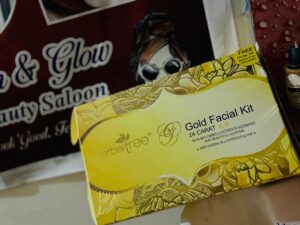The Ultimate Guide to Face Whitening Facials

In today’s world, skincare has evolved into an essential aspect of our daily routines, and face whitening facials have gained immense popularity. These treatments promise to enhance your skin tone, giving you a radiant and youthful appearance. In this comprehensive guide, we will delve into everything you need to know about face whitening facials, including their benefits, ingredients, procedures, and aftercare.
What is a Face Whitening Facial?
In order to lighten the skin and treat conditions like hyperpigmentation, dark spots, and uneven skin tone, a face whitening facial is a specialist procedure. These facials utilize a combination of natural ingredients, chemical agents, and advanced techniques to exfoliate the skin, reduce melanin production, and promote a brighter complexion.
Benefits of Face Whitening Facials
Face whitening facials offer numerous benefits beyond mere skin lightening. Here are some key advantages:
Reduction of Hyperpigmentation: These facials effectively target dark spots and uneven skin tone, resulting in a more uniform complexion.
Exfoliation and Renewal: The treatment helps to remove dead skin cells, revealing fresh, glowing skin underneath.
Improved Skin Texture: Regular facials can enhance skin texture, making it smoother and more refined.
Hydration and Nourishment: Many face whitening treatments include hydrating ingredients that nourish the skin, preventing dryness.
Anti-Aging Effects: Certain formulations can help diminish fine lines and wrinkles, promoting a youthful appearance.
Key Ingredients in Face Whitening Facials
To understand the effectiveness of face whitening facials, it’s important to know the active ingredients that contribute to their results:
1. Vitamin C
Vitamin C is renowned for its brightening properties. It inhibits melanin production, helping to lighten dark spots while providing antioxidant protection against environmental stressors.
2. Kojic Acid
Derived from fungi, kojic acid is a powerful ingredient known for its skin-lightening effects. Tyrosinase, an enzyme involved in the synthesis of melanin, is inhibited by it.
3. Arbutin
One naturally occurring substance that aids in skin whitening is arbutin. It releases hydroquinone slowly, reducing the risk of irritation while effectively brightening the skin.
4. Licorice Extract
Licorice extract contains glabridin, which has been shown to lighten hyperpigmentation. It also has anti-inflammatory properties, soothing the skin.
5. Papaya Enzymes
Papaya enzymes are excellent for exfoliation. They help to remove dead skin cells and promote cell turnover, enhancing skin brightness.
The Face Whitening Facial Procedure
Understanding the typical procedure for a face whitening facial can help you prepare for your appointment:
Step 1: Consultation
Before the facial, a skincare professional will assess your skin type and concerns to tailor the treatment accordingly.
Step 2: Cleansing
The first step in the facial involves a thorough cleansing to remove impurities and prepare the skin for treatment.
Step 3: Exfoliation
Exfoliating agents, often containing alpha hydroxy acids (AHAs) or enzymes, are applied to slough off dead skin cells, allowing the active ingredients to penetrate better.
Step 4: Application of Whitening Agents
The whitening agents, rich in ingredients like Vitamin C or kojic acid, are applied to the skin. These may be left on for a specific duration or massaged into the skin for enhanced absorption.
Step 5: Mask Application
A calming mask is usually applied post-treatment. This retains moisture and calms the skin.
Step 6: Moisturization and Sun Protection
Finally, a hydrating moisturizer and sunscreen are applied to protect the skin and ensure long-lasting results.
Post-Facial Care Tips
After undergoing a face whitening facial, it’s crucial to follow specific aftercare guidelines to maintain the results:
1. Stay Hydrated
After a facial, drinking lots of water promotes the face’s natural healing process and helps keep the skin hydrated.
2. Avoid Sun Exposure
Protecting your skin from UV rays is essential. Apply a broad-spectrum sunscreen daily, and wear protective clothing when outdoors.
3. Follow a Skincare Routine
Stick to a gentle skincare routine that includes hydrating products and avoid harsh scrubs or exfoliants for at least a week post-treatment.
4. Avoid Heat Treatments
To avoid irritation, avoid utilizing steam rooms, saunas, or hot baths for a few days.
5. Regular Maintenance
Consider scheduling routine face-whitening facials every four to six weeks to maintain and improve results.
Potential Side Effects
1. While face whitening facials are generally safe, some individuals may experience mild side effects such as:
2. Redness or Irritation: Temporary redness may occur post-treatment but should subside within a few hours.
3. Allergic Reactions: Always perform a patch test before trying new products to avoid allergic reactions.
4. Sensitivity to Sunlight: Post-treatment skin can be more sensitive to UV rays, making sun protection vital.
Conclusion
Face whitening facials are an effective way to achieve a brighter, more even skin tone. With the right combination of ingredients and professional care, these treatments can significantly enhance your complexion while addressing various skin concerns. Remember to follow post-facial care tips and consult with a skincare professional to find the best treatment for your unique skin type.
For More details, Contact US.
https://thedominatingai.com/contact-us/
You can find Some of the whitening facial kits on Amazon.




